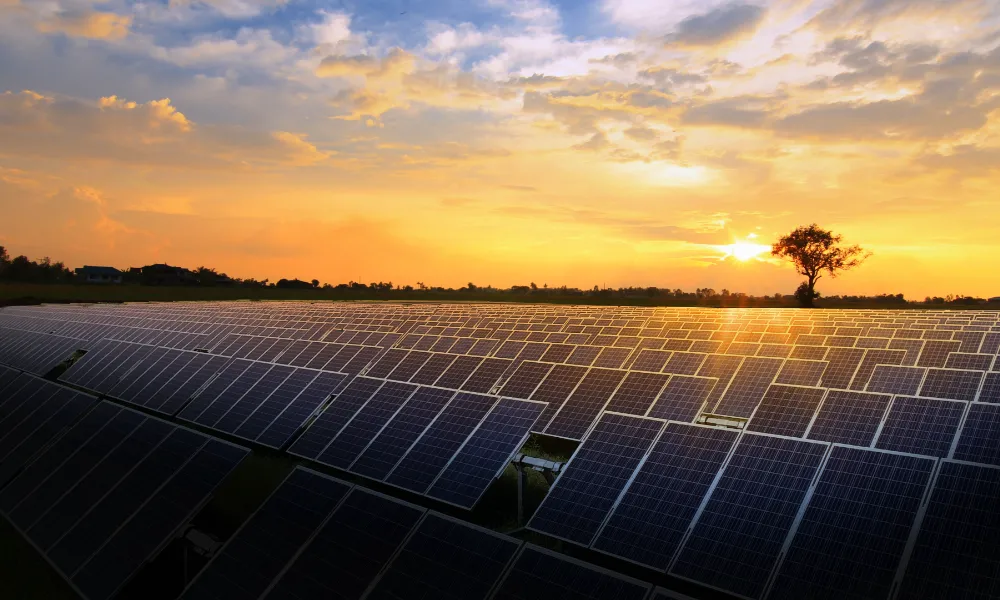It is toward intelligent machines that we race, and there’s one pressing question that we have forgotten to ask:
What is the energy consumption of intelligence?
The answer is staggering.
Each time you query ChatGPT, a server somewhere springs to life, crunching numbers at rapid speeds. Now multiply that by billions of queries, across models, across nations. The result?ChatGPT alone requires about 564 MWh of electricity to run every day — enough to power more than 50,000 homes. And that’s just one application.
The Hidden Toll of the AI Boom
As the world swoons over art, code, and conversations synthesized in these digital realms, something less elegant is taking shape on the back end — data centers needing more and more electricity and air-conditioning, servers failing at the worst possible moment, the whole system running up against limits to its energy use.
The portion of workloads in data centers that are AI-related is expected to increase from 14% in 2024 to 27% in 2027, recent research shows. By 2030, AI could be sipping up more electricity than the actual continent of Africa consumes today.
Goldman Sachs believes global data center power demand will increase 165%, and more than $1 trillion of investment in technology infrastructure will be required. And we’re already feeling the cracks: In Northern Virginia, a cloud infrastructure hub, critical data center projects were delayed 18 to 24 months — because the grid wasn’t keeping up.
From Silicon Valley to Solar Valley
We are going into a new age in which geography is going to be remapped by electricity.
In this era, the nations that possess plenty of cheap, clean energy will not only draw in tech giants — they will be the locomotives of AI development.
The best coder doesn’t always win anymore.
It’s about who powers best.
The Sun Could Be AI’s Best Friend
Of all the energy sources, solar is king. Not only because it is renewable, but because it is scalable, decentralized, and increasingly affordable. While fossil-fuel-based power sources face practical and environmental constraints, the sun provides an elegant, long-term solution for the distributed, always-on nature of AI.
“AI is not only a digital evolution, it is an energy evolution,” adds Chetan Shah, Chairman & Managing Director of Solex Energy Limited.
“The demand for intelligence is exceeding the classic supply chain. Infrastructure needs to be reimagined from the ground up — and that base needs to be sustainable.”
He’s not alone in this view.
As the pressure to hit ESG (environmental, social, and governance) targets grows and power costs eat into tech margins, clean energy is no longer a nice-to-have — it’s a strategic business imperative.
India’s Sunshine Opportunity
India’s role in this unfolding tale is a unique one. With more than 300 sunny days a year, an energy ecosystem in flux, and a bustling tech economy, the possibility of lighting intelligence under sunlight is more achievable than ever.
Solar companies such as Solex Energy have laid the groundwork over the course of more than a decade:
- Grid-connected, reliable utility-scale and rooftop solar projects
- ALMM-compliant modules trusted globally and ready for export
- Hybrid systems and storage options designed to buffer peak loads — absolutely critical for 24/7 data processing
Between large businesses, industrial belts, and urban tech parks, India’s transition towards embedded solar infrastructure isn’t emerging as a trend, but as a need of the hour.
Powering the Future Responsibly
Let’s get one thing straight: AI is here to stay.
But to be genuinely transformative — and to be sustainable — we need to build a future in which intelligence is powered responsibly.
That means:
- Reimagining data infrastructure
- Investing in renewable capacity
- Promoting innovation combined with responsibility through public-private partnerships
“We’re not just here to slap panels on,” says Mr. Shah.
“We’re here to co-create resilience. And in an era of skyrocketing demand, resilience will be the mark of leadership.”
As countries, companies, and innovators pursue the infinite possibilities of artificial intelligence, our biggest challenge won’t be writing code — but keeping the lights on. Solar power might not be as glamorous as AI, but in a very real sense, it’s what enables the intelligence economy. It’s time we pay it the attention — and the investment — it deserves.
Ref Sources:
https://www.alvarezandmarsal.com/sites/default/files/2024-11/Global_Data_Centre%20Insights%202024_0.pdf
https://www.eurekalert.org/news-releases/1003775
https://www.goldmansachs.com/insights/articles/ai-to-drive-165-increase-in-data-center-power-demand-by-2030
https://brightlio.com/data-center-stats/
https://www.businessinsider.com/data-center-operators-concern-power-constraints-price-demand-rise-2025-8
https://www.vox.com/climate/409903/ai-data-center-crypto-energy-electricity-climate
https://www.iea.org/news/ai-is-set-to-drive-surging-electricity-demand-from-data-centres-while-offering-the-potential-to-transform-how-the-energy-sector-works






